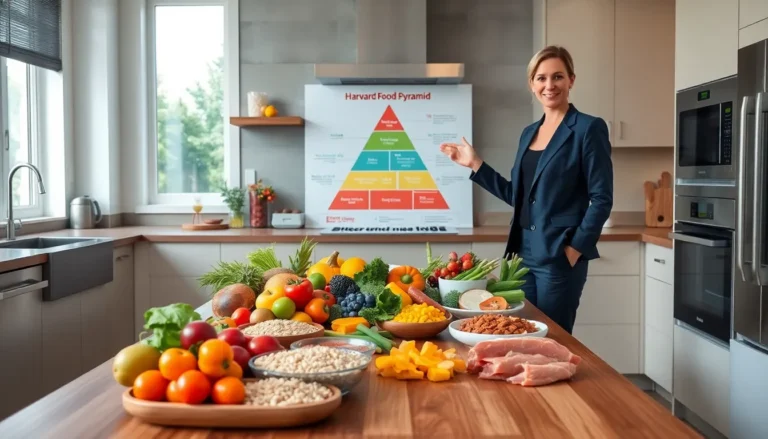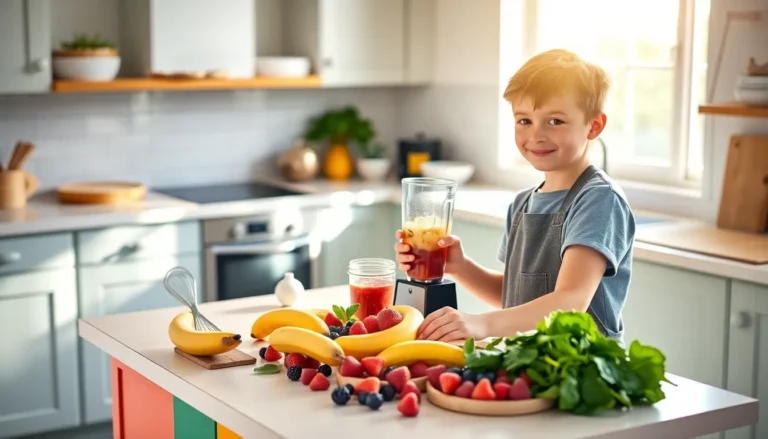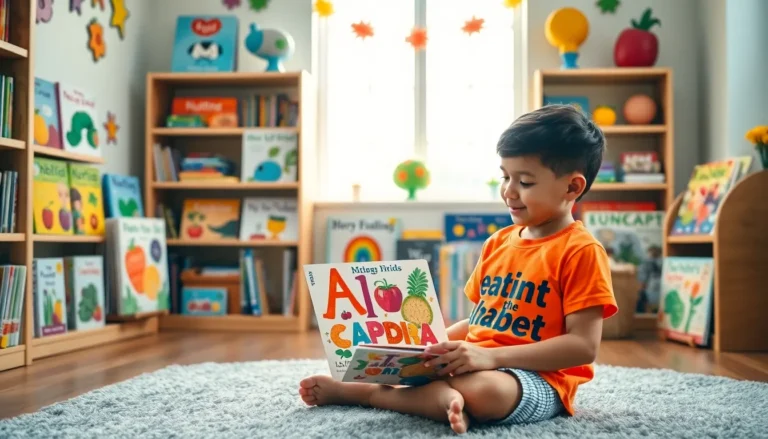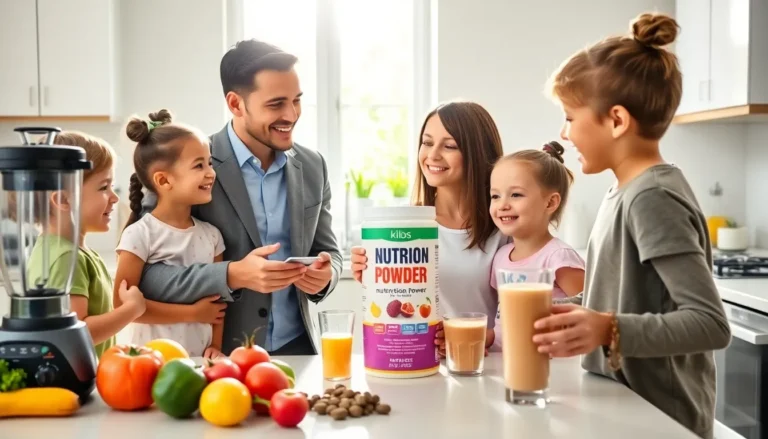Table of Contents
ToggleIn a world where culinary skills can elevate everyday meals into extraordinary experiences, cooking classes have emerged as a popular way to unleash creativity in the kitchen. Whether it’s mastering the art of pasta making or exploring exotic cuisines, these classes cater to all skill levels, offering a hands-on approach to learning.
Participants not only gain valuable techniques but also enjoy the camaraderie of fellow food enthusiasts. With a variety of formats available—from online tutorials to in-person workshops—cooking classes provide a unique opportunity to discover new flavors and techniques. It’s more than just cooking; it’s about building confidence and fostering a passion for food that lasts a lifetime.
Overview of Cooking Classes
Cooking classes provide a structured environment for individuals to improve their culinary skills. These classes offer various formats, including in-person sessions, hands-on workshops, and online tutorials. Participants learn cooking techniques, explore diverse cuisines, and receive guidance from experienced chefs.
Classes cater to every skill level, from beginners learning basic knife skills to advanced cooks mastering intricate dishes. Many cooking schools and culinary institutions provide specialized programs, focusing on themes like baking, international cuisine, or health-conscious cooking.
Participants benefit by enhancing skills and obtaining practical experience in meal preparation, ingredient selection, and kitchen equipment usage. Networking opportunities arise as students connect with other food enthusiasts, fostering a sense of community. Cooking classes ultimately inspire creativity, boost confidence, and ignite a passion for culinary arts.
Benefits of Taking Cooking Classes
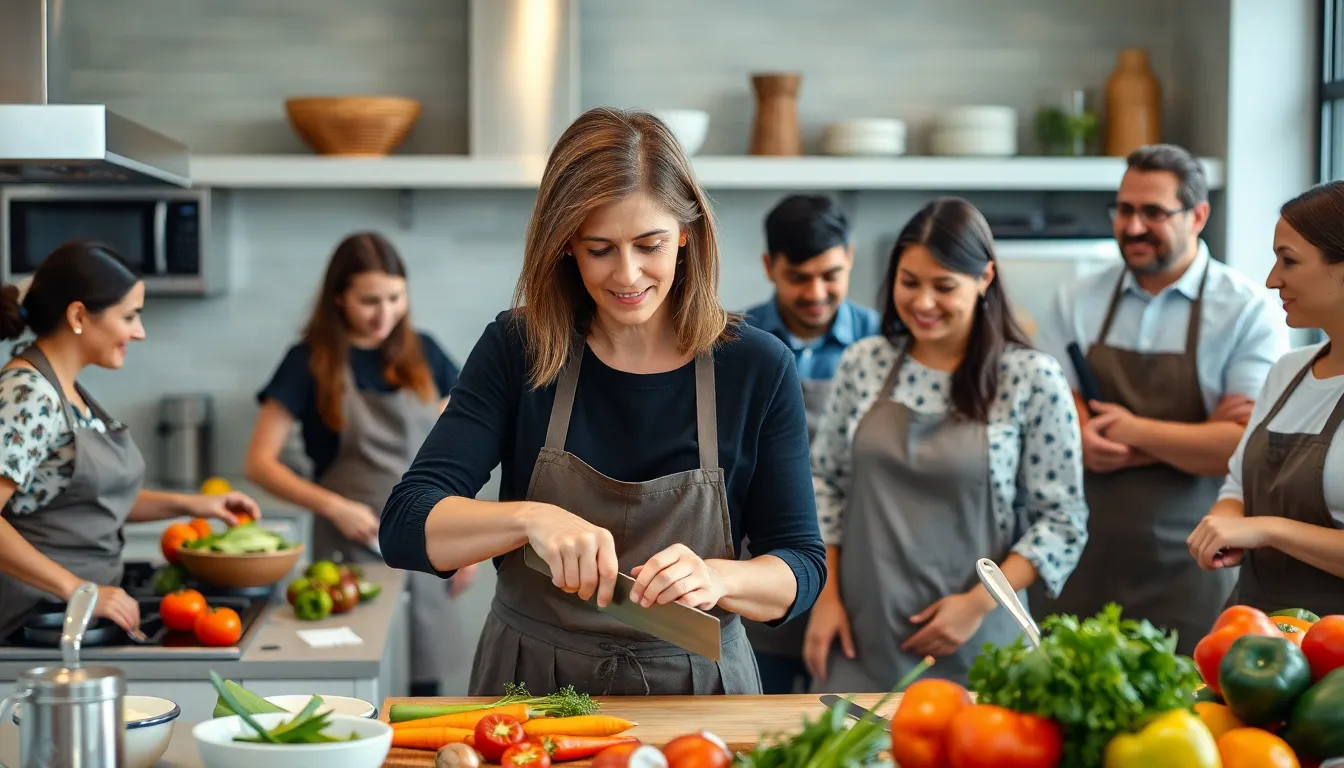
Cooking classes offer numerous advantages, enhancing both culinary skills and social connections. Participants experience personal growth while mastering various cooking techniques.
Skill Development
Skill development remains a primary benefit of taking cooking classes. Participants learn fundamental techniques like chopping, sautéing, and baking from experienced chefs. Classes often include specialized instruction in diverse cuisines and cooking methods.
Participants engage in hands-on activities, allowing them to apply new skills immediately. Learning about ingredient selection and preparation methods enhances their cooking repertoire. Continual practice fosters confidence, increasing their overall culinary competence.
Social Interaction
Social interaction thrives in cooking classes, creating a supportive learning environment. Participants connect with fellow food enthusiasts who share similar passions. This communal aspect enhances the learning experience, providing networking opportunities.
Classes often involve group activities, promoting teamwork and collaboration. Sharing meals after classes allows participants to experience the outcomes of their hard work, fostering friendships and connections. These social bonds often extend beyond the kitchen, inspiring collaboration in future cooking endeavors.
Types of Cooking Classes
Cooking classes come in various formats, accommodating different preferences and lifestyles. The two main types of cooking classes are in-person classes and online classes.
In-Person Classes
In-person classes offer hands-on learning experiences in a structured environment. Participants work directly with chefs, allowing for immediate feedback on techniques such as knife skills, sautéing, and plating. Classes typically vary in size, enabling personal interaction, where individuals ask questions and receive tailored advice. Many culinary schools and community centers host these sessions, covering diverse cuisines like Italian, Indian, or French. Participants also build camaraderie with fellow students by collaborating on recipes, enhancing both learning and social interaction.
Online Classes
Online classes provide flexible learning options, making culinary education accessible from home. Participants can choose from live virtual sessions or pre-recorded tutorials, allowing for self-paced learning. This format covers a wide range of topics, including plant-based cooking, baking, and advanced culinary techniques. Participants benefit from interactive features such as Q&A sessions and online forums, promoting community engagement. With the convenience of learning at one’s own schedule, online classes cater to a broader audience, making culinary skills attainable for everyone.
What to Expect in Cooking Classes
Cooking classes provide a structured environment that enhances culinary skills through hands-on experiences. Participants experience a variety of formats, including interactive workshops and detailed online tutorials. Classes typically cover diverse cuisines, ingredient usage, and techniques specific to each culinary style.
Skill Development
Skill development forms the core of cooking classes. Participants learn essential techniques such as:
- Chopping: Mastering knife skills for precision and safety.
- Sautéing: Understanding heat levels and ingredient combinations.
- Baking: Gaining knowledge on measurements and baking times.
These hands-on activities facilitate immediate application of newly acquired skills.
Community Interaction
Community interaction enriches the cooking class experience. Participants engage in teamwork, collaborating on meal preparations and sharing culinary tips. This social aspect fosters friendships and support among fellow food enthusiasts, enhancing the learning environment.
Themes and Specializations
Cooking classes often focus on specific themes and specializations, such as:
- Baking: Concentrating on pastries, bread, and desserts.
- International Cuisine: Exploring flavors and techniques from various cultures.
- Health-Conscious Cooking: Emphasizing nutrition and healthy meal preparation.
These specialized classes allow participants to dive deeper into particular culinary interests.
Feedback and Support
Feedback from experienced chefs is a vital component of cooking classes. Chefs provide personalized guidance during hands-on training, helping participants refine their techniques and overcome challenges. This support builds confidence and encourages experimentation in the kitchen.
Networking Opportunities
Networking opportunities within cooking classes promote lasting connections among participants. Sharing meals and culinary experiences encourages future collaboration and inspires creativity, fostering a sense of community within the culinary arts.
Tips for Choosing the Right Cooking Class
- Determine skill level: Identify existing culinary skills to find classes tailored to beginners, intermediates, or advanced cooks. Classes designed specifically for each skill level maximize learning potential.
- Consider class format: Decide between in-person and online options based on personal preferences and availability. In-person classes offer hands-on experiences, while online classes provide flexibility and convenience.
- Explore culinary interests: Look for classes that focus on specific cuisines or techniques, such as baking, vegan cooking, or world cuisines. Engaging in these focused classes can enhance personal culinary skills dramatically.
- Check instructor credentials: Research the backgrounds of chefs leading the classes. Experienced instructors with reputable culinary backgrounds often offer valuable insights and expertise.
- Read reviews: Examine reviews and testimonials from previous participants. Authentic feedback helps gauge the quality of the class and the instructor’s teaching style.
- Assess equipment and resources: Investigate the tools and resources provided during the class. Access to high-quality kitchen equipment can enhance the learning experience and ensure participants acquire essential techniques.
- Evaluate class size: Consider the number of participants in each class. Smaller class sizes often allow for more personalized attention, fostering better learning and interaction with instructors.
- Inquire about costs: Review pricing structures for different classes. Understanding what’s included in the fee, such as ingredients or materials, aids in making an informed decision that meets budgetary needs.
- Look for additional offerings: Seek programs that offer extra benefits, such as follow-up courses, community events, or networking opportunities. Classes that support ongoing engagement enhance the learning experience.
Cooking classes offer an enriching experience that goes beyond just learning to cook. They provide an opportunity for personal growth and community connection. Whether in-person or online participants can explore diverse cuisines while honing their skills in a supportive environment.
The hands-on approach and interaction with experienced chefs help build confidence and creativity in the kitchen. As individuals embark on their culinary journey they not only gain new techniques but also forge friendships that can last a lifetime.
Choosing the right class can enhance this experience even further. With the right guidance and a passion for food anyone can transform their culinary skills and discover the joy of cooking.

